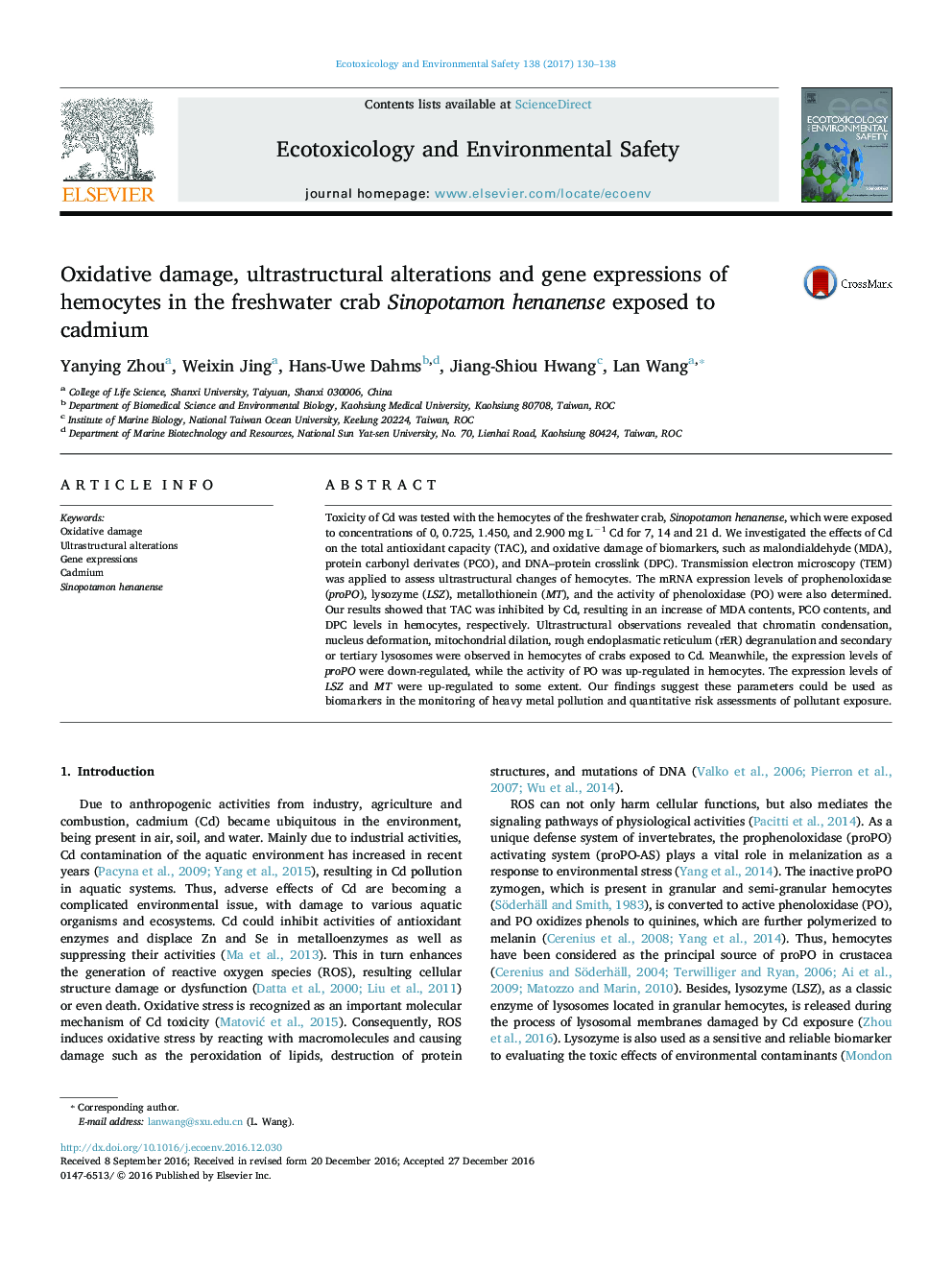| Article ID | Journal | Published Year | Pages | File Type |
|---|---|---|---|---|
| 5747945 | Ecotoxicology and Environmental Safety | 2017 | 9 Pages |
Abstract
Toxicity of Cd was tested with the hemocytes of the freshwater crab, Sinopotamon henanense, which were exposed to concentrations of 0, 0.725, 1.450, and 2.900 mg Lâ1 Cd for 7, 14 and 21 d. We investigated the effects of Cd on the total antioxidant capacity (TAC), and oxidative damage of biomarkers, such as malondialdehyde (MDA), protein carbonyl derivates (PCO), and DNA-protein crosslink (DPC). Transmission electron microscopy (TEM) was applied to assess ultrastructural changes of hemocytes. The mRNA expression levels of prophenoloxidase (proPO), lysozyme (LSZ), metallothionein (MT), and the activity of phenoloxidase (PO) were also determined. Our results showed that TAC was inhibited by Cd, resulting in an increase of MDA contents, PCO contents, and DPC levels in hemocytes, respectively. Ultrastructural observations revealed that chromatin condensation, nucleus deformation, mitochondrial dilation, rough endoplasmatic reticulum (rER) degranulation and secondary or tertiary lysosomes were observed in hemocytes of crabs exposed to Cd. Meanwhile, the expression levels of proPO were down-regulated, while the activity of PO was up-regulated in hemocytes. The expression levels of LSZ and MT were up-regulated to some extent. Our findings suggest these parameters could be used as biomarkers in the monitoring of heavy metal pollution and quantitative risk assessments of pollutant exposure.
Related Topics
Life Sciences
Environmental Science
Environmental Chemistry
Authors
Yanying Zhou, Weixin Jing, Hans-Uwe Dahms, Jiang-Shiou Hwang, Lan Wang,
